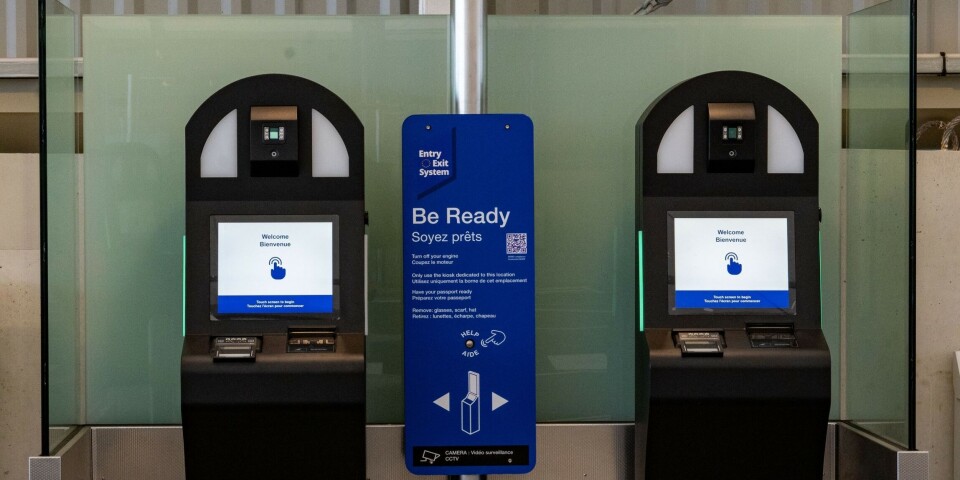French chef bakes innovation with 3D biscuit printer
Engineer-turned-pastry chef Marine Coré-Baillais's invention is elevating the art of pastry-making and even includes edible plates and cups
Marine Coré-Baillais hopes to expand to the domestic market in the future
La Pâtisserie Numérique
An engineer-turned-pastry chef is baking new ground for patisseries with the invention of a 3D printing machine for biscuit dough.
Marine Coré-Baillais started her career by establishing a company that used 3D printing techniques to make metal parts, including some used by Formula One racing cars.
In 2018, she decided to change direction and take her interest in cooking to a new level. She passed a certificat d’aptitude professionelle and worked as a pastry cook with the celebrated chef Cédric Grolet in Le Meurice hotel in Paris.
“With my background in 3D printing I thought it would be relatively easy to invent a 3D printer which could be used with biscuit dough,” Ms Coré-Baillais told The Connexion.
“I thought I could invent a working machine and start to raise money from a working prototype in six months – but in the end it took two-and-a-half years.”
Read more: French inventors convert food waste into biodegradable plastic
Shape of things to come
Her invention uses a special flour which is put into one part of the machine, while liquid butter, eggs and sugar are added to another.
After a design is uploaded from a laptop or smartphone, the shape is recreated by the flour surrounding the liquids in a process similar to the sand-casting of metal.
When printing is finished, the dough, still surrounded by flour to support it, is baked in an oven. The flour is then brushed away to reveal the biscuit shape.
The flour can be reused for other designs.
“You can design things on the computer which you would not be able to make easily by hand, such as fancy lacework biscuits, which come out perfectly,” said Ms Coré-Baillais.
“But what professional cooks mostly use the machines for is to make supports of various shapes for small snacks and nibbles, either sweet or savoury. When these are made by hand they are incredibly time-consuming.”
Tasty plates
Another use has been edible cups and plates.
“This was not something I initially envisaged,” said Ms Coré-Baillais, “but once cooks got the machine they quickly saw the potential.
“We have tweaked the recipe so we can now print 3D plates or espresso cups, made out of biscuit, which you can eat after you have drunk the coffee. They hold the coffee for at least 45 minutes, which is long enough for it to get cold!”
Ms Coré-Baillais used her own money to launch her company, called La Pâtisserie Numérique.
“I am a single mother who changed careers, wanting to make hardware, and that did not fit in with the sort of profile the banks were used to seeing,” she said.
“However, once the prototype was ready, some investors came in. Then I entered a TV programme [Qui veut être mon associé? on M6], which opened the doors for a new series of fundraising.”
Among the backers was the Normandy region, which is why the business is based in Louviers (Eure).
The 3D printers, called Patiss3, are sold or rented only to professionals. Rentals are currently more popular because there are tax advantages for restaurants.
Most pay €500 a month and also have to buy the specially-made flour, which is around three times the price of ordinary pastry flour.
The basic recipes can be adapted to be more or less sweet or savoury, and to produce different textures.
Read more: Meet the French couple with a secret macarons recipe
Creating your own design
Included in the service is an option to translate drawings into 3D digital models – although Ms Coré-Baillais says many chefs are competent enough with computers and 3D modelling to do their own designs.
Those who are not can pay to keep the exclusivity of their designs, or get them for free on the proviso their designs can be added to a template database that other cooks can download from.
Once the business of selling machines to professional cooks is established, Ms Coré-Baillais said it may be possible to make models aimed at the domestic market.
“At the moment we are unique in the world. There are 3D machines for chocolate and to shape minced meat, but no one else is close to making something to successfully print biscuits,” she said.
“I want to build a solid base before going any further.”





























